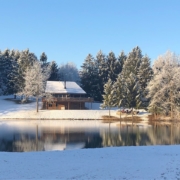The Ohio Fly Angler’s Guide: Preparation for Spring Trout Fishing

The spring fly fishing season in Ohio is something every angler anticipates like that first spring cast over a rising brookie. Yet, as the cold days fade away and the first buds of spring appear, it’s essential to not just dream about the ideal fishing spot but to get prepared for what lies ahead. This guide will walk you through everything you need to do right now to ensure your fly fishing gear, tackle, and casting techniques are primed and ready for fly fishing in Ohio.

Start With Your Gear
It’s time to break the hibernation of your fly fishing equipment. Unearth your rod(s) and reel(s) (I know you have several…) from their winter resting places and conduct a comprehensive review. Examine the rod segments, ensuring they interlock smoothly without any gaps. Give your reel a whirl – does it spin without a hitch? Unspool the line and set it aside, disassemble the reel halves and clean it regardless with mild soap and water and allow it to dry before oiling it with a small bit of reel oil from your local fly shop like Mad River Outfitters in Columbus, or Orvis in Worthington. (TIP: don’t use the aerosol kind, they can degrade line and plastic parts.)

This also provides an opportune moment to evaluate the condition of your fishing line AND clean and lubricate it. A neglected line could result in lost fish or, worse, damaged gear. Ensure it’s free from any frays, splits, or kinks, which could affect your casting distance, precision, and presentation. Clean it with a mild soap and warm water and allow it to dry. Lastly, condition and lubricate it with Flip Pallot’s Special Delivery Fly Line Dressing, available from Mad River Outfitters.
Pay attention to the essential tools too like your nippers, pliers or forceps, fly floatant, and line straightener. If your gear appears fatigued, consider the prospect of acquiring top-tier replacements now. Let’s put it this way, allocating resources to exceptional gear isn’t an unnecessary expenditure; it’s a calculated move that lays the groundwork for your ultimate triumph in fly fishing. A small expense can make a huge difference.

While gearing up might seem like a mundane task, remember, it is the tiny details that often distinguish a successful angler from a disappointed one. Like a well-tuned instrument, your gear needs to perform flawlessly when it’s time for the concert – or in this case, when you’re fly fishing in Ohio’s scenic waters like you’ll find at a private fishing club like our scenic and accessible Briarwood Sporting Club in Bellefontaine, Ohio or the beautiful Mad River, Clear Fork River, or Chagrin River. We’ll address the all-important flies next.
Stock Up on Flies, Tippet, and Leaders
Just as a chef needs the right ingredients, a fly angler needs an assortment of flies, tippet, and leaders at their disposal. Think of this as curating your culinary collection, each fly promising a delectable treat to your aquatic targets. Delve into your fly assortment. How diverse is your collection? Does it cater to the varied dietary preferences of Ohio’s trout for spring, summer, and fall seasons? What worked well last season that you need to restock? But remember, don’t get overwhelmed – in Ohio trout fishing you can get by with no more than 2 dozen of the most widely used flies. Ensuring you have an array of flies can give you an edge when it comes to attracting your finned foes. And remember, for Ohio trout don’t give in to a whim to try something flashy unless you know first-hand, or from an expert source, it is worth it!
Also, take a close look at your tippet and leader supplies. Are they worn out, and old, or do they still hold their integrity? Remember, tippets and leaders are the silent heroes of your fly fishing setup, providing the critical connection between your line and the fly. Each type serves a specific function and having a variety on hand can make a difference depending on the conditions of your chosen fishing spot. Even tippet on an unused spool from years ago can wear out simply from age and sun exposure.

For instance, a heavier leader is ideal when you’re casting larger, air-resistant flies, while a lighter leader is the way to go when you need a delicate presentation with smaller flies. As for tippets, remember that different sizes are suited for different species of fish, so ensure you have an array to cater to Ohio’s freshwater inhabitants. Still confused, visit the great folks at Orvis-Worthington and Mad River Outfitters who are experts with flies and line and they know what works best in Ohio.
On a practical note, be cognizant of the cost implications of stocking up on these items. Yes, it’s an investment, but an investment that’s pivotal to your fly-fishing success. After all, what’s the cost of a few flies compared to the thrill of hooking a prize catch? Consider it an investment in your future fishing adventures.
Stocking up on these essentials is akin to laying a strong foundation for a building. With a robust inventory of flies, tippet, and leaders, you’re setting yourself up for a successful spring fly fishing season in Ohio’s diverse waterways. You’re not just preparing to fish; you’re preparing to excel at it.
Tackle Organization Tips
Before embarking on your Ohio fly fishing journey, a well-organized fishing vest or sling pack can serve as your dependable ally. A systematic approach to storing your gear can save you precious time when you’re immersed in the pursuit of a coveted trout. It’s not just about storing your gear; it’s about having a precise idea of where everything is located when you’ve spotted a lunker and you need to quickly change flies or add floatant.

Begin by categorizing your flies. Arrange them into dry flies, nymphs, and streamers. This way, you can easily identify and pick the right bait based on the fish you are targeting. Separate fly boxes for each are ideal. Consider the Orvis clear, two-sided waterproof boxes. They are as easy to use as they are durable.
Next up, your tippets and leaders deserve a section of their own. Arrange them by size or strength. When in the throes of battle with a tenacious trout, you won’t be fumbling around for the right leader or tippet, thus keeping your cool and maintaining control over the situation. Consider a tippet reel organizer to attach to your vest or pack. Some packs and vests, like the Orvis Guide Sling Pack, have the tippet organizer built-in! Do you often find yourself forgetting where you stored your fishing line or your extra reel spool? A clear and logical storage system in your vest or pack can turn these instances into a thing of the past. Dedicating specific compartments for these items not only ensures their safekeeping but also facilitates their quick retrieval during critical moments.

Let’s not overlook the need for a section for small accessories like fishing line nippers, forceps/pliers, floatants, or spare reel parts. If you don’t own them now, I highly recommend a zinger for your nipper and a second for your forceps – (a zinger is the small retractable device and cord that attaches to your tools and the other end to your pack or vest. Having these tools handy can make a world of difference when you’re in the middle of the water or the fishing action is peaking! The zinger will also prevent that terrible moment of dropping a tool in the stream.
To sum it up, it’s not just about filling your fishing vest; it’s about transforming it into a dynamic control panel, ready to assist you in your Ohio fly fishing exploits. Remember, the organized angler isn’t merely the one who keeps his/her tackle tidy. It’s the angler who, amidst the rush of journey to the stream and the thrill of the chase, knows exactly where every piece of gear is and how to deploy it for efficiency and getting that next cast off into the water.
Getting Geared Up with Clothing
Spring fly fishing in Ohio can be an incredible experience, but it also requires suitable attire to face unpredictable and changing weather conditions. The transition period from the chill of winter to the warmth of spring can bring fluctuating temperatures, wind, and rain. Thus, it’s critical to ensure that your clothing is up to the task to keep you comfortable, warm, and dry as you embark on your angling adventure.
Start by investing in a quality fishing jacket. Opt for a waterproof, windproof, and breathable jacket that can withstand Ohio’s spring showers and gusty breezes without making you feel like you’re inside a sauna. Remember, while angling is a battle of wits against the fish, it’s also a battle against the elements.
Next up, consider your layering strategy. Layering allows you to regulate your body temperature efficiently. A base layer that wicks away moisture, coupled with a warm mid-layer, will keep you snug without limiting your movement.
Let’s not forget the importance of fishing pants or waders. Although, fortunately at Ohio’s premier fishing destination, Briarwood Sporting Club, waders aren’t needed. Both water and wind-resistant fishing pants and waders are essential in protecting your lower body from water, wind, and chill.
Protective headgear is another crucial element. A hat, balaclava, or cap can shield your face from sun glare, rain, and even errant hooks during those enthusiastic backcasts. Consider a hat with a wide bring for dual rain and sun protection! Sunglasses, besides looking cool, protect your eyes from harmful UV rays and the glint of the sun off the water. Models with polarized lenses are strongly recommended to reduce glare further and help you see into the water.
Finally, give your feet the attention they deserve. A sturdy pair of waterproof boots provides the necessary grip when you’re navigating slippery streamside turf and rocks. And of course, the right socks can make the difference between a delightful day of angling or a miserable one with cold, damp feet. Wool and poly blends are best. Bear in mind, the idea is to balance protection, comfort, and mobility. Each article of clothing is a gear in itself, contributing to your overall fishing experience. Also, remember that wearing natural or earth-tone colors can make you less noticeable to the fish, giving you an added advantage in the Ohio waters.
While preparing for your fishing trip, consider that clothing isn’t just about fashion or comfort – it’s an essential part of your gear. Dressing appropriately increases your chances of staying out longer, remaining focused, and ultimately, catching more fish. With the right clothing, you can confidently face the Ohio spring, knowing you’re as prepared as you can be, from head to toe.
Casting Practice Makes Perfect (or nearly…)
Even during the colder Ohio months, take the opportunity to polish your casting skills. Even though you’re not knee-deep in an Ohio stream, the power of practice cannot be underestimated. Your backyard, a nearby park, or even your living room can serve as the perfect stage for honing your technique.

Casting in fly fishing is akin to playing an instrument. It’s an art that requires precision, rhythm, and timing. Just as a pianist practices scales to perfect his performance, a fly angler practices casting to ensure flawless execution when the time comes.
Keep in mind, when it comes to casting, it’s not always about how far you can cast your line. The real game-changer is accuracy. Being able to place your fly precisely where you want it, and in a manner that mimics natural insect movement, is often what distinguishes an adept angler from the rest.
Practice different casting techniques. Work on your roll cast, for times when there’s limited space behind you. Try the double haul for those moments when you need to cover more distance. Experiment with the reach cast, a handy trick when dealing with complex currents.
While practicing, focus on getting your line to land straight. A straight line not only enhances your accuracy but also helps in achieving a drag-free drift, which can significantly improve your chances of a strike.
Consider investing time in understanding the mechanics of casting. Learn about the vital role your wrist and arm play, the importance of timing in achieving the optimal loop, and the correlation between line speed and distance.

Embrace your mistakes during practice. Is your cast often landing in a heap? Is your line not extending fully before you make the forward cast? Each error provides valuable insight into areas of improvement. Use this time to troubleshoot and iron out these kinks.
Remember, in fly fishing, every cast is a conversation with the water and its inhabitants. With practice, you can ensure that your message – the fly – is delivered with grace, precision, and effectiveness. Consider fly and casting lessons with a pro guide like we offer at Briarwood.
So, while the rivers and streams of Ohio await the onset of spring, let your practice sessions be the prelude to the symphony of successful angling. As the adage goes, the more you sweat in practice, the less you bleed in battle. The fish might not be biting yet, but your preparation today can pave the way for your success this spring!
Explore New Fishing Locations
While the anticipation of spring fly fishing in Ohio brews, now is the ideal time to start planning your fishing adventures in unexplored territories. Devote some time to researching potential fishing locations online. You can learn a lot from fellow anglers and other local angling communities – and Ohio fly shops are the best place to find this guidance. Their advice, experiences, and suggestions can guide you to new, abundant fishing spots that you may have overlooked.
Beyond public waters, consider elevating your angling experience by becoming a part of a private fishing oasis. Places such as Briarwood Sporting Club offer a distinctive, high-quality fishing experience where tranquility and bounty go hand in hand. These clubs can provide a haven away from crowded public fishing areas, allowing you to fully immerse yourself in the thrill of the chase. And fishing at Briarwood provides a superior and accessible fishing environment less than an hour from the greater Columbus and Dayton areas, and about 2 hours from Cincinnati.
Embarking on an expedition to unfamiliar waters not only invigorates your angling journey but also broadens your skill set. Each new location presents its unique challenges and learning opportunities, helping you evolve as an angler. Whether it’s adapting to different water conditions, learning to read new rivers, or figuring out the feeding patterns of unknown fish species, every new fishing spot enriches your overall fly angling prowess.
As the winter fades into spring, start envisioning your fishing exploits in Ohio’s uncharted waters. Map out your itinerary, secure your permissions or memberships, and prepare yourself for an exciting angling season ahead. Exploring new waters isn’t just about catching more fish; it’s about embracing the unknown, testing your abilities, and most importantly, enhancing your love for the art of fly fishing. So, buckle up and let your angling curiosity guide you toward new horizons this spring!

For over 4 decades Briarwood Sporting Club, a private members-only fishing club located in Bellefontaine, Ohio, has been a “slice of wilderness” in northwest central Ohio, delivering a relaxed atmosphere of soothing freshwater amid breathtaking rolling hills, meadows, and timber. Four streams are home to some very impressive “wall ready” trout – including rainbows, brown, brook, golden, and blue. While Briarwood offers superb fly fishing for trout, fourteen lakes and ponds offer lunker Largemouth, slab panfish, and other finned favorites like Tiger Muskie and Hybrid Striped Bass.
As a majestic and vast landscape, Briarwood is also one of America’s finest whitetail hunting destinations offering mature deer on expertly managed lands. Gorgeous hardwoods, pines, and meadows present a habitat that has plentiful food plots and wildlife openings.
First-class lodging, 5-star service, a welcoming Loafing Lodge, and incredible and diverse wildlife viewing complete the perfect outdoor escape to create an unforgettable experience. Visit www.briarwoodclub.com for more information.
Drew McCartt, Briarwood’s Director of Sporting Services has been an avid freshwater fisherman for over 50 years, including 30 years of fly fishing and guiding. He has an MS in Freshwater Fisheries Research from Ohio State University and a BS in Fisheries & Wildlife Management from the University of Tennessee. He can be reached at drew@briarwoodclub.com
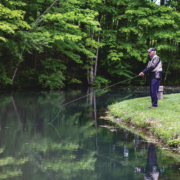
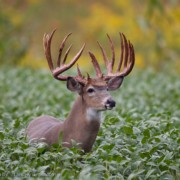
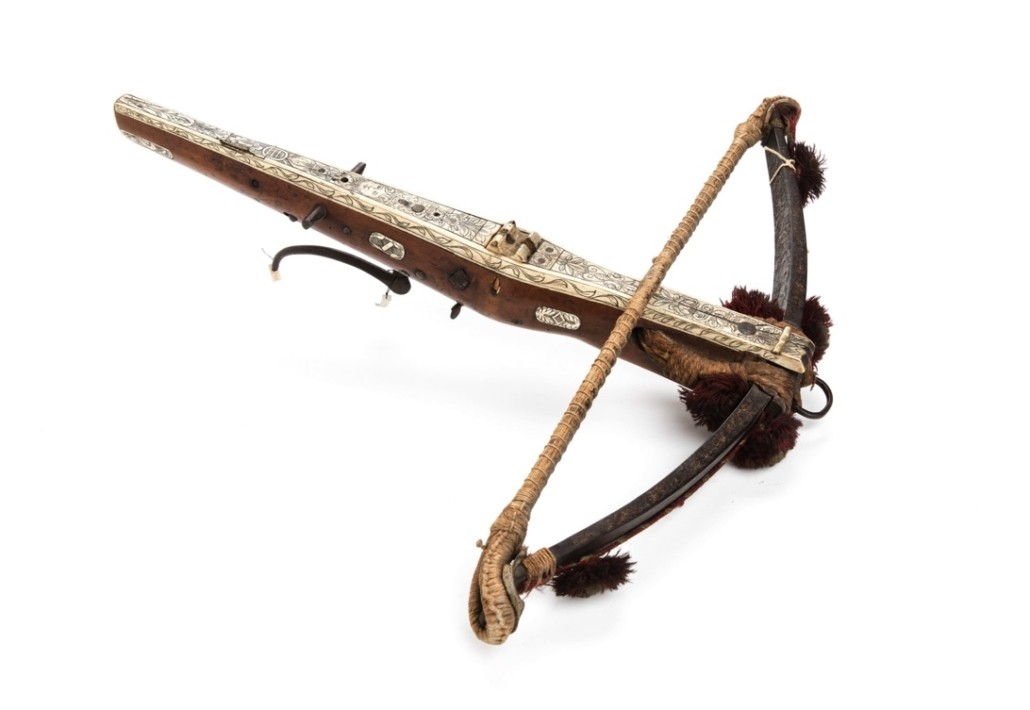



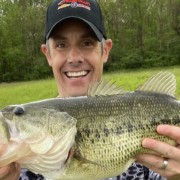



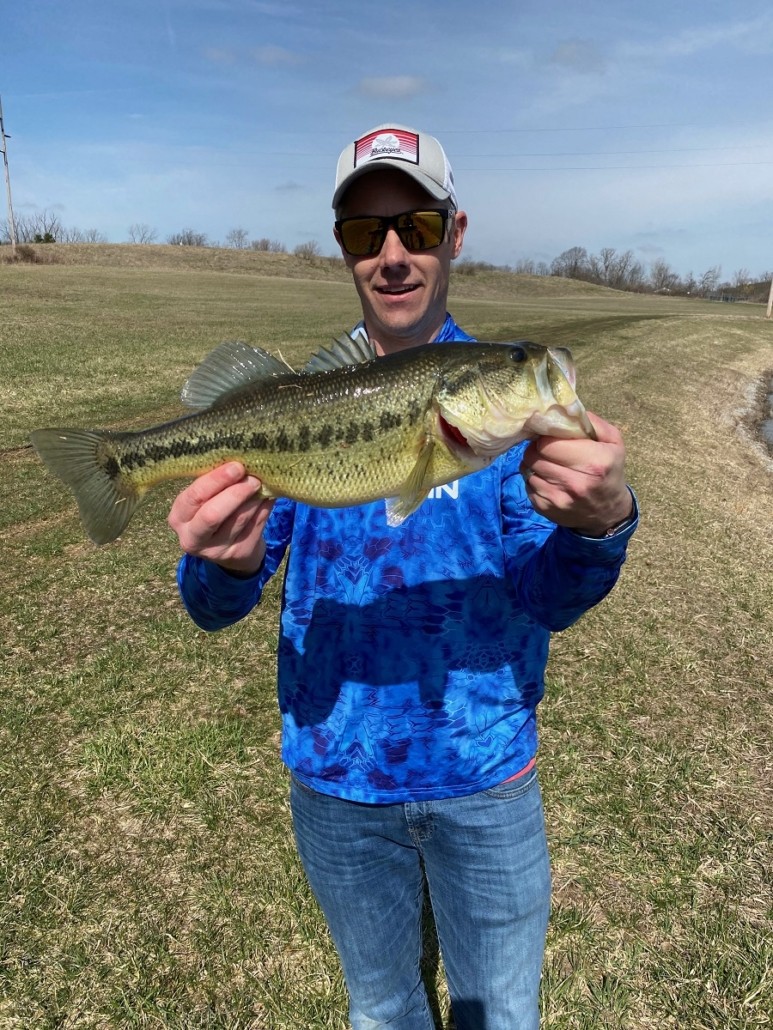
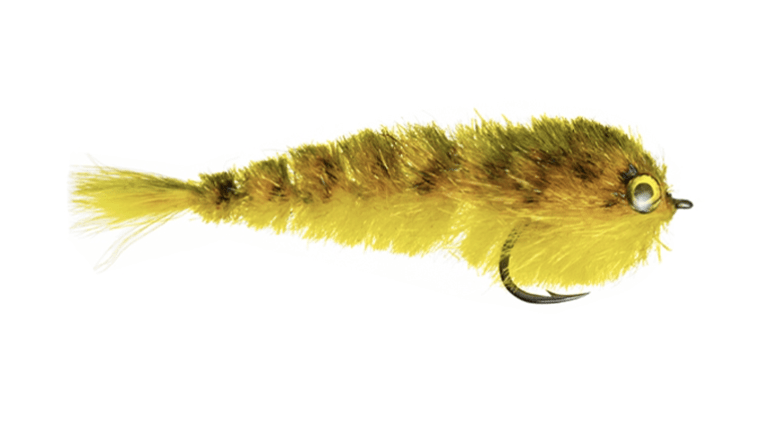
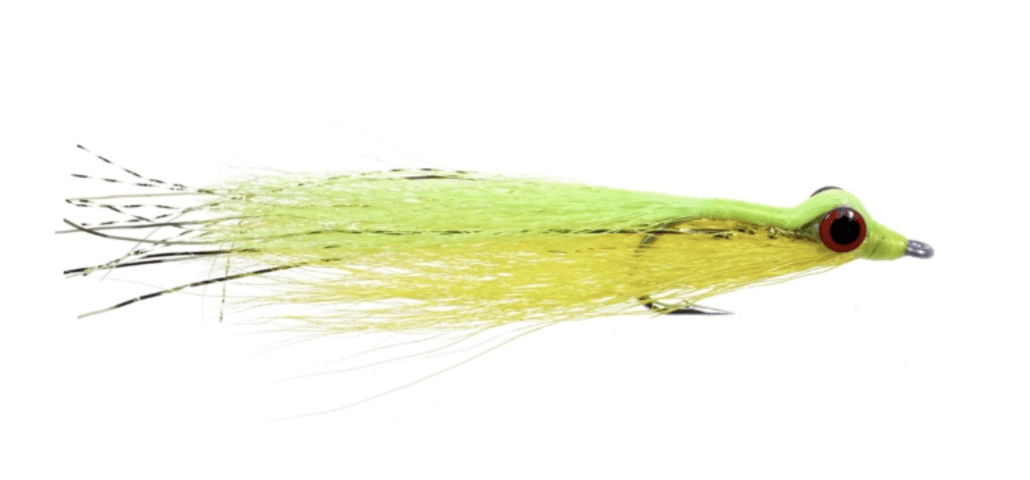
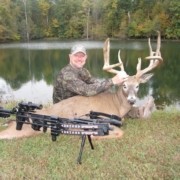


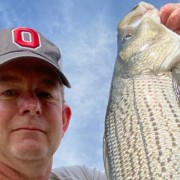



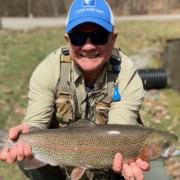

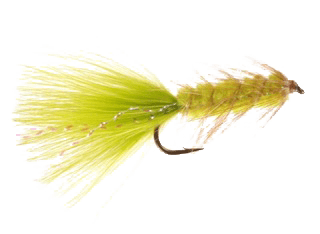


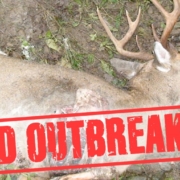



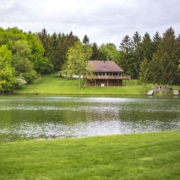






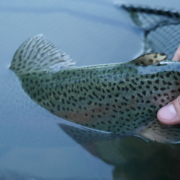
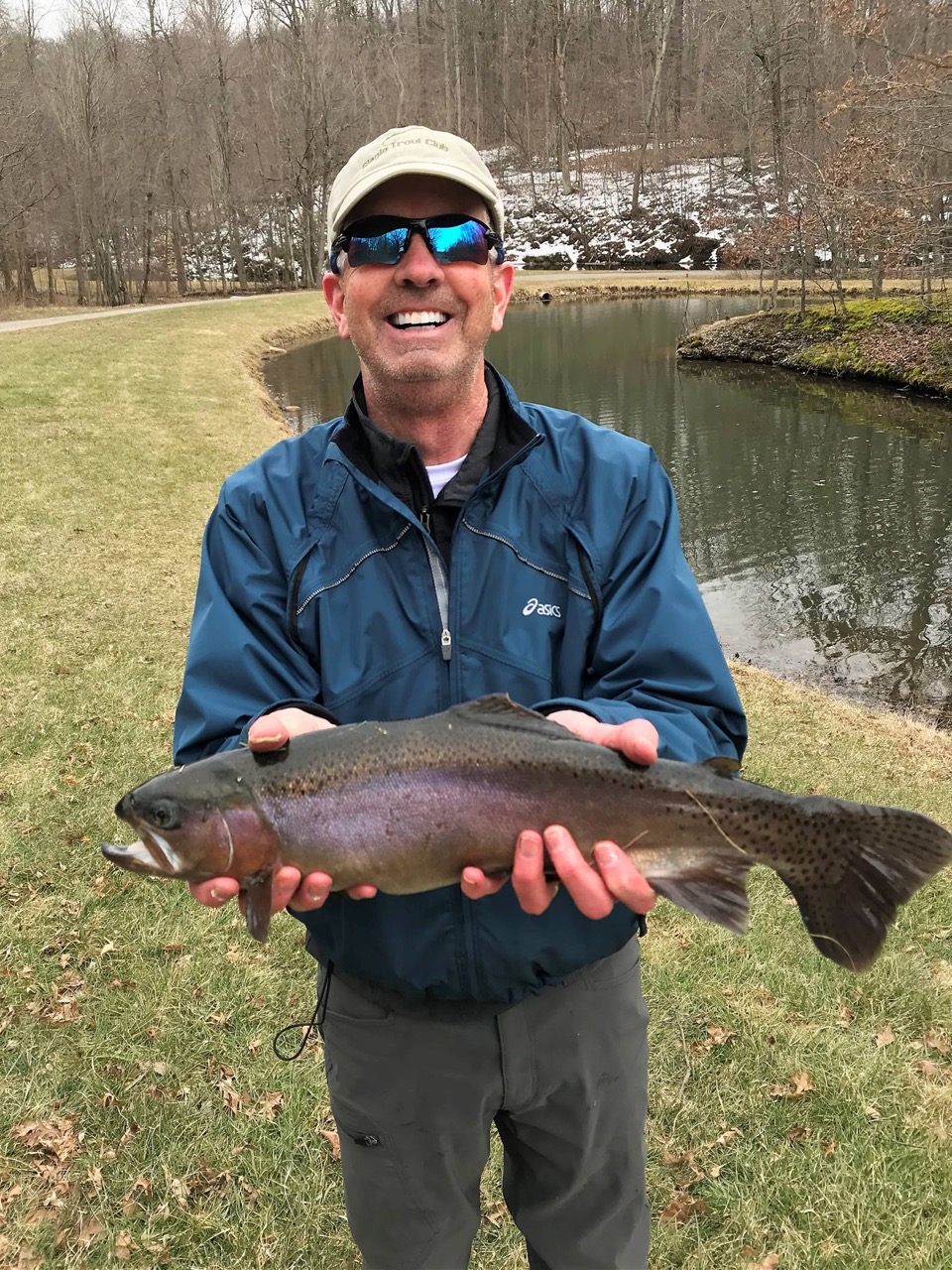


 Other Unique Fishing Opportunities
Other Unique Fishing Opportunities

